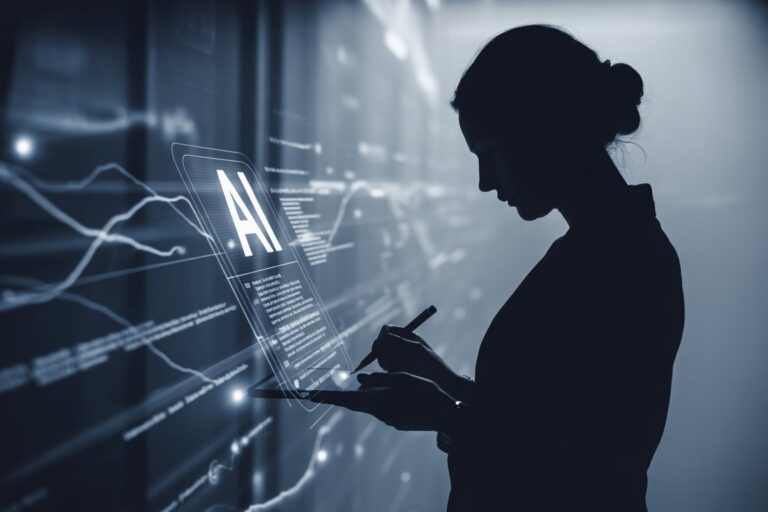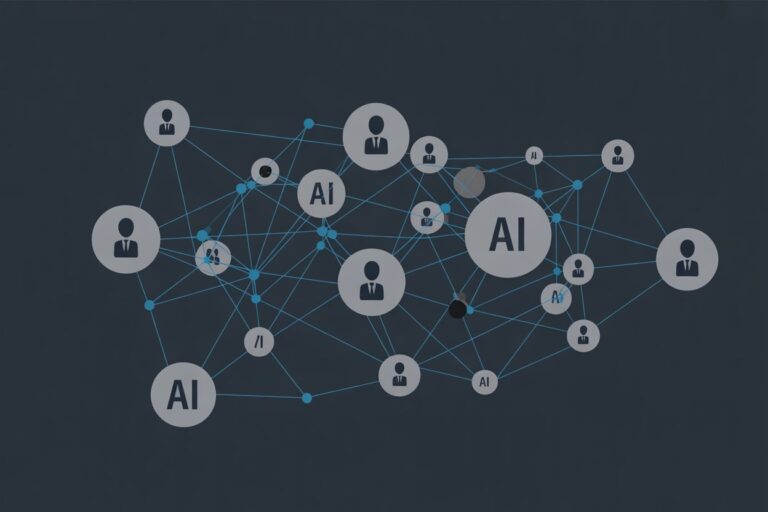Opening the Black Box and Making the Case for Explainable AI
Lawyers make arguments the court can see. Machines make calculations the court cannot. Inside the black box of algorithmic reasoning, the question is whether explanation can survive automation. As artificial intelligence begins to draft pleadings and analyze precedent, the law must decide whether an algorithm can truly explain its reasoning or only simulate understanding.
When Transparency Becomes the Test
In law, reasoning is everything. Courts do not accept conclusions without justification, and neither should the tools that serve them. The rise of large language models has brought efficiency to drafting, research, and discovery, but it has also introduced opacity. Lawyers may now cite arguments written by machines they cannot fully interpret. That gap between performance and understanding has become one of the defining issues in modern legal ethics.
Explainability and interpretability, terms once confined to data science, are now part of the legal vocabulary. The National Institute of Standards and Technology (NIST) defines explainability as the ability to describe how and why a system made a decision. The EU AI Act requires that high-risk systems provide human-readable reasoning. Without these capacities, no court, regulator, or lawyer can responsibly rely on AI output. The profession’s credibility depends on knowing not only what a model concludes, but the logical path it took to get there.
From Prediction to Argument
Most AI systems predict outcomes. Legal reasoning, by contrast, builds and tests arguments. The field of argumentation theory has emerged as a way to make AI’s logic visible, tracing how claims, premises, and counter-arguments interact. The approach mirrors what lawyers already do: state a position, cite authority, and address objections. Where machine learning sees patterns, argumentation frameworks model deliberation itself.
In a landmark paper, “Argumentation-Based Explainability for Legal AI,” researchers argue that structuring AI reasoning as networks of supporting and opposing claims makes explanations both transparent and contestable. Each node represents a premise; each edge, a logical relation. When a model’s output can be displayed as a chain of arguments, each open to inspection, the black box begins to dissolve. It becomes possible to see how a conclusion emerged, and where a human reviewer might disagree.
Building Accountability Into Code
For AI to hold up in court, accountability must be more than a slogan. The U.S. Federal Trade Commission has emphasized through enforcement actions and policy statements that developers must maintain records of data, testing, and rationale, essentially requiring firms to demonstrate accountability. The same logic applies to legal tools. If a system’s argumentation trace reveals the sources it relied on and the reasoning steps it took, regulators and courts can audit the process rather than trusting the output on faith.
Legal academics have reached comparable findings. A survey in Digital Society found that explainable systems outperform opaque models in professional acceptance, particularly when users can visualize reasoning graphs. Transparency does not guarantee accuracy, but it makes accountability possible, and that is the standard the rule of law demands.
Where Regulation Meets Design
Across jurisdictions, policymakers are embedding explainability into legal AI design. Under the EU AI Act’s high-risk classification, any system used in judicial or law-enforcement contexts must provide “traceability, transparency, and human oversight.” Canada’s Directive on Automated Decision-Making similarly requires explanations “meaningful to affected individuals.” Even voluntary frameworks like NIST’s AI Risk Management Framework treat explainability as a cornerstone of trustworthy systems.
These rules are converging on a single principle: when rights are at stake, automated reasoning must be both interpretable and challengeable. Argumentation frameworks offer one of the few technical methods capable of meeting that bar. They make it possible for a litigant, or a judge, to follow the model’s reasoning as they would a written opinion, step by step, clause by clause.
Real-world implementations are beginning to emerge. Virginia adopted a risk assessment tool in 2002 to help divert low-risk nonviolent offenders from prison to alternative programs. The state’s approach, evaluated by the National Center for State Courts, contributed to a significant slowdown in prison population growth. While not without implementation challenges, Virginia’s experience demonstrates that transparent, well-designed tools can reshape judicial decision-making when properly implemented with appropriate oversight.
The Limits of Algorithmic Reasoning
Despite rapid progress, argumentation-based explainability remains an emerging science. Models can map logical structures, but they still struggle with ambiguity, incomplete data, and value judgments, the raw material of most legal questions. Bias remains a persistent risk, particularly when training data reflects inequities baked into past rulings. The ProPublica investigation of criminal risk scoring showed how even well-intentioned systems can amplify disparities when fairness definitions diverge.
Legitimacy is the other obstacle. People accept outcomes more readily when reasons come from humans. Even a perfectly transparent machine may fail to satisfy the public’s need for explanation grounded in empathy and accountability. Law depends not only on logic, but on persuasion, and that remains a human art.
The practical challenges are significant as well. Implementing argumentation frameworks requires substantial computational resources, expertise in both law and AI, and ongoing maintenance as legal doctrines evolve. For smaller firms and public defenders’ offices, these resource demands can be prohibitive. The technology exists, but access remains uneven, raising questions about whether explainable AI might exacerbate existing inequalities in legal representation.
Building an Explainable Legal Future
The next generation of legal AI will likely merge neural and symbolic approaches, combining the fluency of large language models with the discipline of argumentation graphs. Pilot projects are already exploring hybrid “neuro-symbolic” reasoning that can both generate natural-language arguments and expose the logical skeleton beneath them. Recent systematic reviews show that neuro-symbolic AI research has experienced notable growth since 2020, reflecting the growing recognition of the importance of integrating symbolic and sub-symbolic approaches to enhance AI’s reasoning capabilities. If successful, these tools could allow courts, firms, and regulators to trace every automated step back to an auditable source.
The shift will not be quick. It will require interdisciplinary oversight, new professional standards, and a redefinition of what technological competence means for lawyers. Bar associations and law schools must grapple with what it means to supervise AI systems, not just use them. Lawyers will need to understand at least the fundamentals of how these systems work, what their limitations are, and when human judgment must override algorithmic suggestions. Professional responsibility in the age of AI means knowing enough to ask the right questions about the tools in one’s practice.
From the client’s perspective, the stakes are personal and immediate. When an algorithm influences bail decisions, child custody determinations, or access to benefits, affected individuals deserve to understand why. Explainable AI is not merely a technical achievement. It is a prerequisite for procedural justice. Litigants must be able to contest not just outcomes, but the reasoning that produced them. Without that capacity, algorithmic decision-making becomes indistinguishable from arbitrary power.
Projects like DeepMind’s AlphaGeometry and OpenAI’s o1 model demonstrate the potential of combining neural intuition with rule-based logic. These developments suggest a path forward for legal AI that balances computational power with transparency. But the goal is clear: to ensure that any machine allowed near legal reasoning must not only reach a conclusion, it must also be able to explain it in terms the law can accept.
Sources
- arXiv (2025): Argumentation-Based Explainability for Legal AI: Comparative and Regulatory Perspectives
- arXiv (2025): Neuro-Symbolic AI in 2024: A Systematic Review
- California Law Review (2023): Judging Risk
- Digital Society (2024): Explainable AI and Law: An Evidential Survey
- EU AI Act: Article 13 – Transparency Obligations for High-Risk AI Systems
- EU AI Act: Article 6 – Classification Rules for High-Risk AI Systems
- Federal Trade Commission (January 2024): AI Companies Must Uphold Privacy and Confidentiality Commitments
- Federal Trade Commission (January 2024): AI Accountability and Key Principles
- Go-Dive (2024): Neuro-Symbolic AI: A New Approach Shaping the Future of Law
- Government of Canada: Directive on Automated Decision-Making
- National Institute of Justice (2002): Offender Risk Assessment in Virginia: A Three-Stage Evaluation
- National Institute of Standards and Technology: AI Risk Management Framework
- ProPublica (2016): Machine Bias in Criminal Risk Assessment
- Stanford Law School CodeX (2024): Breakthroughs in LLM Reasoning Show a Path Forward for Neuro-Symbolic Legal AI
- The Washington Post (2019): Algorithms Were Supposed to Make Virginia Judges Fairer
- Wikipedia: Neuro-Symbolic AI
This article was prepared for educational and informational purposes only. It does not constitute legal advice and should not be relied upon as such. All cases, sanctions, and sources cited are publicly available through court filings and reputable media outlets. Readers should consult professional counsel for specific legal or compliance questions related to AI use.
See also: Truth on Trial: Courts Scramble to Authenticate Evidence in the Age of Deepfakes







